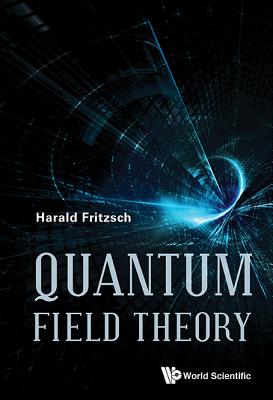The matter in our universe is composed of electrons and quarks. The dynamics of electrons and quarks is described by the Standard Model of particle physics, which is based on quantum field theories. The general framework of quantum field theories is described in this book. After the classical mechanics and the relativistic mechanics the details of classical scalar fields, of electrodynamics and of quantum mechanics are discussed. Then the quantization of scalar fields, of spinor fields and of vector fields is described.The basic interactions are described by gauge theories. These theories are discussed in detail, in particular the gauge theories of quantum electrodynamics (QED) and of quantum chromodynamics (QCD), based on the gauge group SU(3). In both theories the gauge bosons, the photon and the gluons, have no mass. The gauge theory of the electroweak interactions, based on the gauge group SU(2) x U(1), describes both the electromagnetic and the weak interactions. The weak force is generated by the exchange of the weak bosons. They have a large mass, and one believes that these masses are generated by a spontaneous breaking of the gauge symmetry.It might be that the strong and the electroweak interactions are unified at very high energies ('Grand Unification'). The gauge groups SU(3) and SU(2) x U(1) must be subgroups of a big gauge group, describing the Grand Unification. Two such theories are discussed, based on the gauge groups SU(5) and SO(10).
The matter in our universe is composed of electrons and quarks. The dynamics of electrons and quarks is described by the Standard Model of particle physics, which is based on quantum field theories. The general framework of quantum field theories is described in this book. After the classical mechanics and the relativistic mechanics the details of classical scalar fields, of electrodynamics and of quantum mechanics are discussed. Then the quantization of scalar fields, of spinor fields and of vector fields is described.
The basic interactions are described by gauge theories. These theories are discussed in detail, in particular the gauge theories of quantum electrodynamics (QED) and of quantum chromodynamics (QCD), based on the gauge group SU(3). In both theories the gauge bosons, the photon and the gluons, have no mass. The gauge theory of the electroweak interactions, based on the gauge group SU(2) x U(1), describes both the electromagnetic and the weak interactions. The weak force is generated by the exchange of the weak bosons. They have a large mass, and one believes that these masses are generated by a spontaneous breaking of the gauge symmetry.
It might be that the strong and the electroweak interactions are unified at very high energies ("Grand Unification"). The gauge groups SU(3) and SU(2) x U(1) must be subgroups of a big gauge group, describing the Grand Unification. Two such theories are discussed, based on the gauge groups SU(5) and SO(10).
Get Quantum Field Theory by at the best price and quality guranteed only at Werezi Africa largest book ecommerce store. The book was published by World Scientific Publishing Co Pte Ltd and it has pages. Enjoy Shopping Best Offers & Deals on books Online from Werezi - Receive at your doorstep - Fast Delivery - Secure mode of Payment
 Jacket, Women
Jacket, Women
 Woolend Jacket
Woolend Jacket
 Western denim
Western denim
 Mini Dresss
Mini Dresss
 Jacket, Women
Jacket, Women
 Woolend Jacket
Woolend Jacket
 Western denim
Western denim
 Mini Dresss
Mini Dresss
 Jacket, Women
Jacket, Women
 Woolend Jacket
Woolend Jacket
 Western denim
Western denim
 Mini Dresss
Mini Dresss
 Jacket, Women
Jacket, Women
 Woolend Jacket
Woolend Jacket
 Western denim
Western denim
 Mini Dresss
Mini Dresss
 Jacket, Women
Jacket, Women
 Woolend Jacket
Woolend Jacket
 Western denim
Western denim
 Mini Dresss
Mini Dresss





































